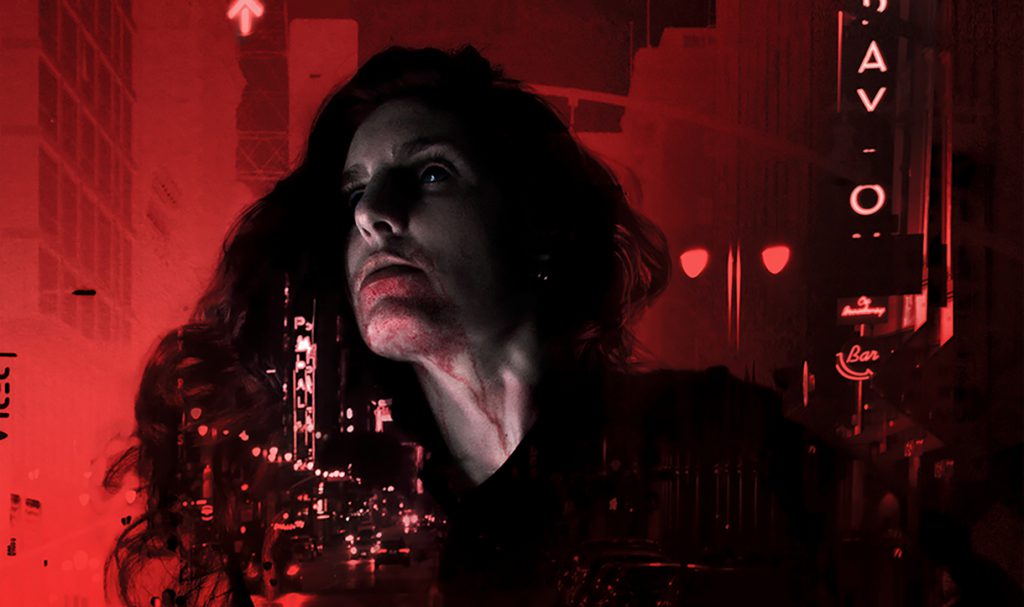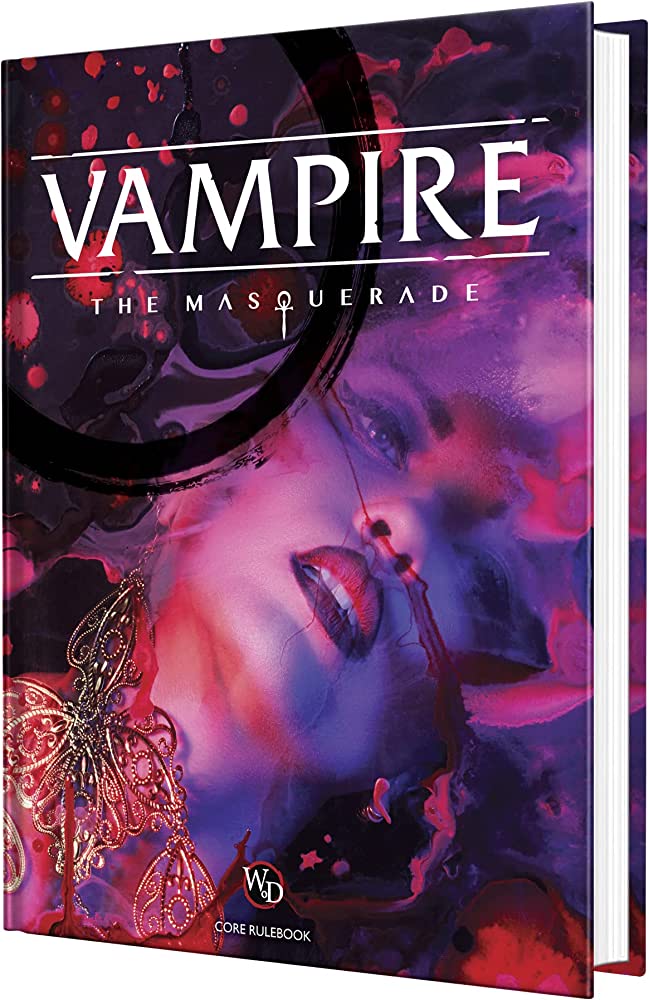If you missed Avery’s intro to the World of Darkness, you’ll want to check that out first! She’s continuing her coverage of that world with a primer for Vampire: The Masquerade, perhaps the most famous RPG in the series.
The Lore & You: Or, a Bunch of Stuff That Matters if You’re a Nerd

According to vampire folk stories and dubious religious texts, vampires (or “Kindred,” if you’re being proper) were created in biblical times when God cursed Caine, one of the first humans, for the crime of killing his brother and lying to God. The curse spread as Caine chose his successors, splitting off into separate bloodlines over time. Despite the differences between each bloodline, or “clan,” they share the main aspects of the curse: A need to consume blood, immortality, vulnerability to sunlight, and worst of all, an internal, hungry Beast, pulling them downwards from humanity.
By modern nights, Kindred span the entire world, despite the best efforts of the churches and governments of the world to cull them. The clans remain forces of nature, each with powerful supernatural abilities of their own, aided by centuries of wealth and power that individual Kindred have built up. Kindred are becoming an increasingly rare species, however: The beginning of what they call the “Second Inquisition,” a targeted attack on the species by the allied forces of the religious institutions and special forces of the world. Additionally, the blood of Caine becomes weaker and weaker as the number of generations separating a newly turned vampire from him increases, leading to an influx of half-human half-Kindred “Thinbloods.”
Furthermore, Kindred society, politics, and clans are all central to most games of Vampire. There are three main factions in their society, each split further by centuries of infighting: The Camarilla, Anarchs, and the Sabbat.
The Camarilla is made of traditionalist, wealthy vampires who thrive on order and law, and function as the closest thing to a Kindred government. Most other vampires criticize them heavily for their reliance on old-fashioned thinking and technology that is incompatible with the modern nights: The Camarilla relies on a modern feudal system of Princes and Sheriffs, a system that buckles quickly in the face of drone strikes and SWAT raids. Power struggles, desperate grabs for wealth, and long-winded political drama from creatures who never die are the staples of the Camarilla.
The Anarchs are the opposite: Lone Kindred, loosely connected by a vague ideology of antiestablishmentarianism form the bulk of their ranks. The average Anarch is focused on survival in the most physical sense: While Camarilla members can face final death for a social slip-up or disrespectful comment, Anarchs have to fight tooth and nail, sometimes literally, for every scrap of blood and shelter.
The Sabbat are evil. That’s pretty much their whole thing– they believe in vampire supremacy and wielding the power of Caine to subjugate everyone else. They’ve been nearly wiped out in recent years, a collaborative operation by the Camarilla, Anarchs, and their unlikely allies: the Second Inquisition.
But what is a vampire?

A vampire is a revived corpse with “Vitae,” a magical, blood imitating substance, running through its veins. The Vitae protects their body from most forms of harm, reducing them to a comatose state rather than letting them die if they take damage from anything apart from fire or the sun, as well as gifting them certain powers in the form of Disciplines, supernatural abilities that range from mind control to future sight to invisibility. The main enemy of a Kindred– besides the sun– is their Beast. Each Beast is unique to each vampire, dictated by their creator, their clan, and their own personal traits. The Beast is the monstrous part of a Kindred, the part that demands bloodshed, the part that feeds the worst parts of their self.
The Clans
In fiction, each clan is an independent bloodline, all stemming from Caine. In game, the sixteen clans are the closest equivalent to classes or playbooks: They dictate which Disciplines are initially available to a Kindred, as well as the Bane and Compulsion that afflicts them. Additionally, each clan draws from populations that fit their ideals, meaning that each clan also provides a handy list of archetypes for one to draw inspiration from.
Disciplines operate on a five dot system, with each dot opening up new possibilities and powers. These dots are either distributed during character creation or gained during play as the Kindred’s player spends experience. Every character can learn any Discipline, given enough time, but their clan dictates what comes easiest to them.
Banes are the opposite: These represent the individual weakness of each clan, and are even more wide-ranging than Disciplines. The Banes represent the dark side of each clan, as well as their history. Whether it’s a hopeless addiction to blood or an inability to stand artificial lights, Banes serve as roleplay hooks with exciting gameplay consequences.
Compulsions are exactly what it says on the tin. Each clan suffers from a Compulsion, a more specific aspect of their Beast. Some Kindred are compelled to rebel against every system they see, while others are forced by their Beasts to collect beautiful things: Compulsions are powerful hooks for roleplay, as well as interesting ways to explore a Kindred’s descent from humanity.
What makes Vampire special?
Vampire: The Masquerade features two combat systems. Traditional fangs-and-bullets-and-claws fighting, and social combat. The consequences are just as dire: A vampire without a reputation is a vampire that’s as good as dead. While Health measures a Kindred’s fortitude, their Willpower represents their ability to continue a verbal spar. Vampire politics are at the center of Vampire, and the ability to fight with your words is as important as your skill with your fangs or a gun.
Additionally, the setting itself is a major pull: the World of Darkness is a dark, seductive place, amplified by the fact that you play as vampires.
Okay, I’m sold. How do I get started?
Vampire has a few different options when it comes to dipping your toes. If you want to start small, Paradox has produced a series of actual-play podcasts that you can find on their YouTube to get a taste of what the games are like. LA by Night, the flagship series, has a total of five seasons and concluded in 2021. Currently in production is New York by Night, which at the time of publication has two seasons with a third on the way.
If you want to hop right into playing, Vampire offers the New Blood Starter Pack, a quick start pack available for just under ten USD on Drive Thru RPG. Coming soon is a physical starter set, which will be released at a currently unknown date. If you want to drop in the deep end, you can pick up the core rulebook, which contains everything you need to play, minus a few of the clans included in the expansion books.
Wrap-up:
Vampire is the best known of the World of Darkness games, and for good reason– the loose, roleplay focused gameplay pairs well with an incredibly vast ongoing metanarrative and archive of lore. Plus, more importantly, vampires are cool. Good night everyone, and good luck: You never know what lives in the dark.


